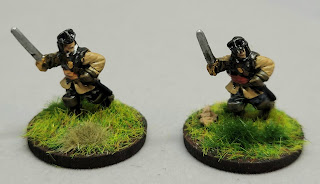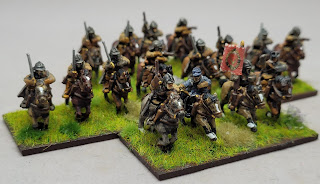Who'd have thunk it?

Way back in the innocent days of the tail end of 2017, when if you entered a bank wearing a mask you'd have a lot of explaining to do, I started this blog. It was meant as a store for all the snippets of information that were lying around on scraps of paper; something that would help me buy the correct version of Stirland Battlemire/Mud (I'm not sure, think it is mud, would have to check here first) when I visit the shops - even when I'd forgotten to take my shopping list with me. I didn't really expect many people to visit, or even read my inane ramblings. As the little counter thingy has just rolled past a very big number (a quarter of a million!) I'd like to say a big thank you to everyone who has visited the blog; read my nonsense (unlikely); looked at the pretty pictures (more likely); followed @KeepPowder on Twitter; liked posts; retweeted; commented upon posts; used one of my Google maps; promoted the blog on their own blog or website; generously supported t...




